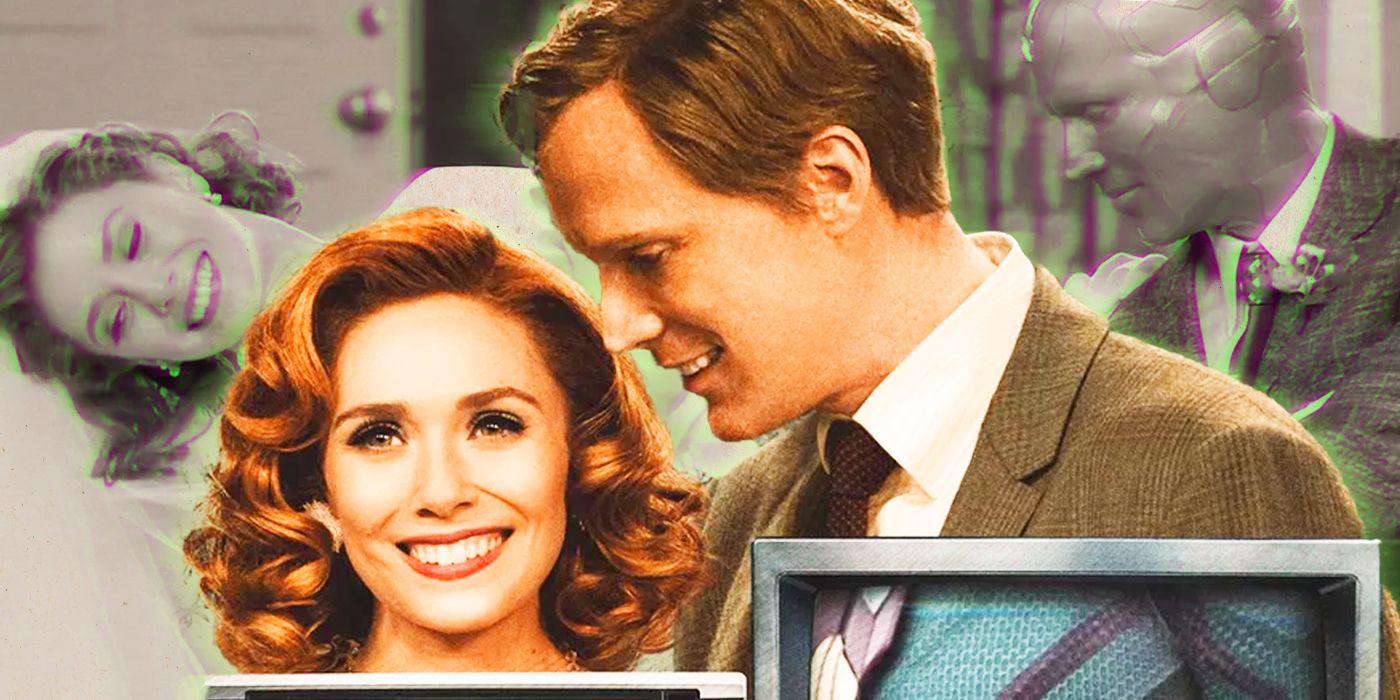Marion Spates, who works for Digital Domain and served as a visual effects supervisor on WandaVision, recently opened up about what inspired the infamous hex wall created by Wanda Maximoff in the hit series.
"The overall look of the hex wall came from WandaVision's VFX Supervisor, Tara DeMarco, and it is actually an homage to old school tube-based television sets," Spates told Art of VFX. "The wall is meant to reflect the look of a cathode-ray tube television, complete with glitchy lines caused by interference, and a different color scheme used to reflect Wanda’s emotional state."
The effects specialist added that the creation of the hex wall was completely driven by the show's plot, and there are several details in the wall that were a "reflection of the show's TV and sitcom-inspired nature." He continued, "The wall is also influenced by Wanda's emotional state... So in episode 104 when you first see the wall from the outside it is a calm blue, but in the final moments when Wanda is angry, it is a dark red."
In regard to specific items that helped shape the wall's look, Spates noted that the hex wall is made up of three elements inspired by cathode-ray tube TVs, the type of set that would be at home in the classic sitcoms referenced in the show. Those elements were the "phosphor pattern," which is inspired by a distorted image on a CRT screen; "cathodic lines," which mimic lines you'd see on a CRT TV; and the "cathodic panels," which are smaller cubes that add detail to the image.
"Our effects team built the hex wall by layering in the moving TV-inspired effects, generating animated passes that erratically tear, and represented these elements within the hex," Spates explained. "It was then passed off to comp, who created the final look of the hex."
Spates also discussed the importance of using a glitch effect when Wanda was forced to rip open the wall in order to let the citizens out of Westview toward the end of the series, explaining, "The studio was adamant that the tearing of the wall feature the glitch effect, and the wall itself was heavily influenced by the look of old CRT televisions that frequently have scan lines." He concluded that "the effect was meant to be reminiscent of a TV under stress, which played into the story."
Spates comments came about two weeks after Monsters Aliens Robots Zombies (MARZ) visual effects supervisor Ryan Freer opened up about crafting Vision's evolving look throughout Wandavision using a combination of AI technology and CGI effects.
Written by Jac Schaeffer and directed by Matt Shakman, WandaVision stars Elizabeth Olsen as Wanda Maximoff/Scarlet Witch, Paul Bettany as Vision, Randall Park as Agent Jimmy Woo, Kat Dennings as Darcy Lewis, Teyonah Parris as Monica Rambeau and Kathryn Hahn as Agnes/Agatha Harkness. The series is available to stream on Disney+.
Source: Art of VFX

